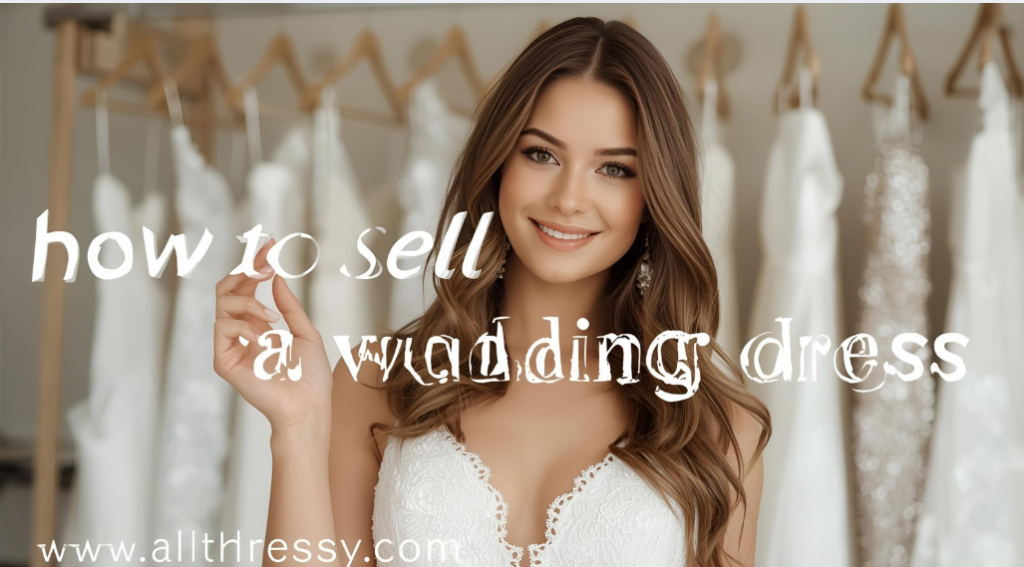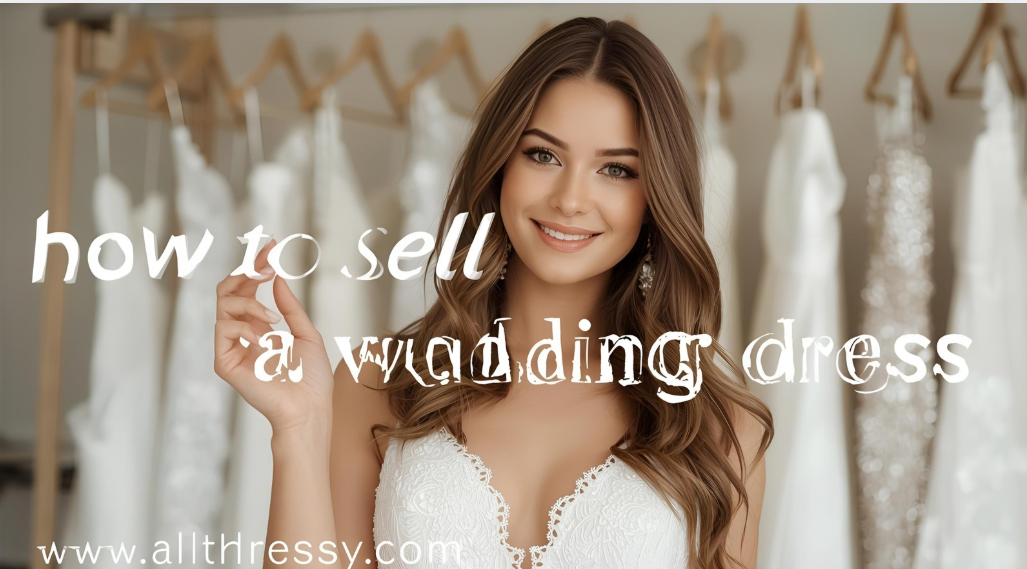The wedding day is over, the memories are cherished, and now you are left with one of the most beautiful, sentimental, and often expensive items you will ever own: your wedding dress. Hanging in a closet, preserved in a box, it represents a profound moment in your life. Yet, for many, the practicalities of life set in. The dress takes up space, and the financial investment tied up in it could be put towards a new car, a down payment on a home, or the next great adventure. This is where the question arises: how to sell a wedding dress? The process can seem daunting, filled with uncertainty about value, platforms, and the logistics of handing over such a personal item. This comprehensive guide is designed to demystify that process entirely. We will walk you through every single step, from preparing your gown for sale to navigating negotiations and finalizing the sale securely. Learning how to sell a wedding dress is not just about recouping costs; it’s about giving your dress a second chance to create magic for another person, turning your cherished memory into someone else’s dream come true.
The Pre-Sale Preparation: Laying the Groundwork for a Successful Sale

Before you list your dress online or take a single photograph, thorough preparation is the key to attracting serious buyers and achieving the best possible price.
Step 1: Determine a Realistic Asking Price
This is the most critical step in understanding how to sell a wedding dress. You cannot simply ask for what you paid. The value of a wedding dress depreciates significantly the moment it is purchased, and even more so after it has been worn.
- Research Comparable Listings: Spend time on pre-owned wedding dress platforms like Stillwhite, PreOwnedWeddingDresses, and even eBay. Search for your exact designer, style name, and year. Filter by condition (e.g., “new without tags,” “worn once,” “altered”) to see what similar dresses are actually listed for, not just what they sold for.
- Understand Depreciation Factors:
- Condition: Is it brand new with tags (NWT)? Worn once and professionally cleaned? These are the most valuable. Signs of wear, stains, or damage will lower the price.
- Age and Style: A dress from 2005 will likely sell for less than one from 2022, as styles change. Classic, timeless styles (like a simple A-line or ballgown) often have broader appeal than highly trendy designs.
- Original Price: As a very rough starting point, a dress worn once and professionally cleaned might sell for 30% to 50% of its original retail price. A brand new, unworn dress might fetch 50% to 70%.
- Price Strategically: Set a competitive but slightly negotiable price. Buyers on these platforms expect to make an offer. Pricing 10-15% above your absolute minimum gives you room to negotiate while still appearing fair.
Step 2: Professional Cleaning and Preservation
If you haven’t already done so, investing in professional wedding dress cleaning is non-negotiable. A dress with invisible stains like white wine, grass, or makeup will eventually oxidize and turn brown, becoming permanent. A professionally cleaned dress is more attractive, trustworthy, and valuable.
- Find a Specialist: Use a cleaner who specializes in wedding gowns. They understand the delicate fabrics, beads, and lace.
- Consider Preservation: If you are not in a rush to sell, having the dress professionally cleaned and then packaged in a preservation box can be a great selling point, as it guarantees the dress is in pristine, acid-free storage.
Step 3: Gather All Documentation and Extras
Buyers love a complete package. Gather everything that came with the dress:
- The original designer tag (often inside the seam).
- The style name and number.
- The receipt of purchase (if you have it, this builds tremendous trust).
- Any extra fabric swatches.
- The garment bag.
- Crucially, any leftover accessories: a belt, veil, gloves, or even the shoes you wore can be a huge bonus.
The Photoshoot: Showcasing Your Dress to Sell
Your photos are your number one sales tool. In a digital marketplace, buyers cannot touch or try on the dress, so high-quality, honest images are paramount.
- Use a Mannequin or Live Model: The best way to photograph a wedding dress is on a dress form or a person. Hanging on a hanger against a door often creates unflattering folds and fails to show the shape. If you don’t have a mannequin, enlist a friend with a similar build to model it.
- Lighting is Everything: Use natural, indirect daylight. Shoot near a large window during the day, but avoid direct sunlight which can create harsh shadows and wash out details. A clean, neutral background (a white or light grey wall) is ideal.
- The Shot List:
- The Full-Frontal Hero Shot: A clear, well-lit photo of the entire front of the dress.
- The Back: Show the back detailing, buttons, or train.
- Detail Shots: Get close-up photos of the lace, beading, embroidery, neckline, and any unique features.
- The Tag: A clear photo of the designer’s label inside the dress.
- Fabric Close-Up: A shot that shows the texture and quality of the fabric.
- Be Honest: If there is any damage, no matter how small, photograph it clearly. This builds trust and prevents disputes later. Circle or point to the flaw in one of the photos.
Choosing the Right Platform: Where to Sell Your Wedding Dress
Understanding how to sell a wedding dress involves knowing the pros and cons of different marketplaces.
Dedicated Pre-Owned Wedding Dress Sites
- Stillwhite & PreOwnedWeddingDresses.com: These are the industry leaders. They have a massive audience specifically looking for pre-owned wedding dresses. They operate on a one-time listing fee model (not a commission), which can be more cost-effective for higher-priced items.
- Pros: Targeted audience, seller-friendly fee structure, built-in trust.
- Cons: Upfront listing fee, can be competitive.
- Nearly Newlywed: Another reputable platform that often works on a consignment or direct sale model.
General Online Marketplaces
- Facebook Marketplace: Excellent for local, fee-free sales. You can also join specific wedding resale groups in your area or for your dress size.
- Pros: No fees, immediate local reach.
- Cons: Less targeted audience, more time-wasters, lower price points.
- eBay: A massive audience, but it can be a mixed bag.
- Pros: Huge reach, auction format can create bidding wars for desirable dresses.
- Cons: High final value fees, less targeted audience, more potential for fraud.
Brick-and-Mortar Options
- Consignment Boutiques: You leave the dress with a physical store, and they handle the sale for a commission (typically 40-60%).
- Pros: Hands-off approach, they handle marketing and fittings.
- Cons: High commission, you have less control over the price and sale timeline.
- Your Bridal Salon: Some salons will allow you to consign your dress with them, especially if it is a current or recent style.
Crafting the Perfect Listing: Your Sales Pitch
Your description is where you sell the dream and the details.
- Catchy, Keyword-Rich Title: “Watters Galina Crest Gown Size 8 – Worn Once & Professionally Cleaned” is far better than “Beautiful Wedding Dress.”
- Tell the Story (Briefly): Start with a sentence about your wedding day. “I felt absolutely magical in this dress on my sunny garden wedding day.” This creates an emotional connection.
- Be Detailed and Factual:
- Designer, Style, Size: State these clearly.
- Condition: “Worn once for 8 hours and professionally cleaned immediately after.”
- Color: “White/Ivory.”
- Measurements: This is critical! Don’t just rely on the tag size. Provide bust, waist, hips, and hollow-to-hem measurements. This helps buyers who may be between sizes.
- Alterations: Be brutally honest. “Taken in 2 inches at the waist,” “Hemmed 3 inches,” “Bustle added.” Include photos of the alterations.
- Highlight the Extras: “Selling with the original belt and a cathedral veil.”
- Set Clear Policies: State your shipping policy (who pays?), return policy (most pre-owned sales are final, but be clear), and preferred payment method.
Managing the Sale: Communication, Payment, and Shipping
This is the final, crucial phase in mastering how to sell a wedding dress.
- Communication: Be prompt, polite, and professional. Answer all questions thoroughly. Potential buyers may ask for more photos or videos, which is a sign of serious interest.
- Payment: Use a secure method. PayPal Goods and Services is the gold standard. It offers buyer and seller protection for a small fee. Do not accept personal checks, wire transfers, or cashier’s checks from unknown buyers due to fraud risk. Insist on payment clearing completely before you ship.
- Shipping: This requires care.
- Get a sturdy cardboard box.
- Pack the dress carefully, ideally in a plastic bag inside the garment bag to protect it from moisture, then place it in the box.
- Purchase Shipping Insurance for the full selling price.
- Use a tracked and insured service from USPS, UPS, or FedEx.
- Take a video of yourself carefully packing the dress, sealing the box, and attaching the label. This is your insurance against “item not received” or damage claims.
FAQs: Your Wedding Dress Sale Questions Answered
How long does it typically take to sell a wedding dress?
There is no definitive timeline. A highly desirable, modern designer gown priced competitively could sell in a few weeks. A more common or older style might take 6 to 12 months. The key factors are price, condition, and demand for your specific dress. Patience is essential.
What is the best time of year to sell a wedding dress?
The prime wedding planning season is typically from January to July. Listing your dress during this period, especially in the early months of the year, can capitalize on engaged couples who are actively shopping and looking for a deal.
My dress has been altered. Will this make it impossible to sell?
Not at all, but it does change your target buyer. You must be exceptionally clear and detailed about the alterations. Your buyer will now need to be someone who is a similar size and shape to your post-alteration measurements. It may narrow your pool of buyers, but it certainly does not make it unsellable.
Is it safe to sell a wedding dress online?
Yes, if you follow safety protocols. Use reputable platforms with built-in messaging systems (don’t give out your personal email or phone number initially). Always use a secure payment method like PayPal Goods and Services, which protects both parties. Trust your instincts—if a deal feels suspicious, it probably is.
What if a buyer wants to return the dress?
The standard for pre-owned wedding dress sales is that all sales are final. This should be clearly stated in your listing. Returns are generally not accepted because you have no way of verifying the condition of the dress once it has been in the buyer’s possession. Exceptions are only made in extreme circumstances, like if you sent the wrong item entirely.
Conclusion
Learning how to sell a wedding dress is a journey that transforms a stored-away sentiment into a practical financial return and a gesture of kindness to a future bride. It requires effort, honesty, and a strategic approach, from the initial research and cleaning to the perfect photos and secure transaction. By meticulously preparing your gown, pricing it realistically, showcasing it beautifully on the right platform, and managing the sale with professionalism, you can successfully navigate this process. Remember, you are not just selling a garment; you are offering another person the opportunity to feel as beautiful and confident on their special day as you did on yours. Letting go of the dress doesn’t mean letting go of the memory; it means allowing that magic to live on, creating a new story while giving your own a happy and financially savvy next chapter.

